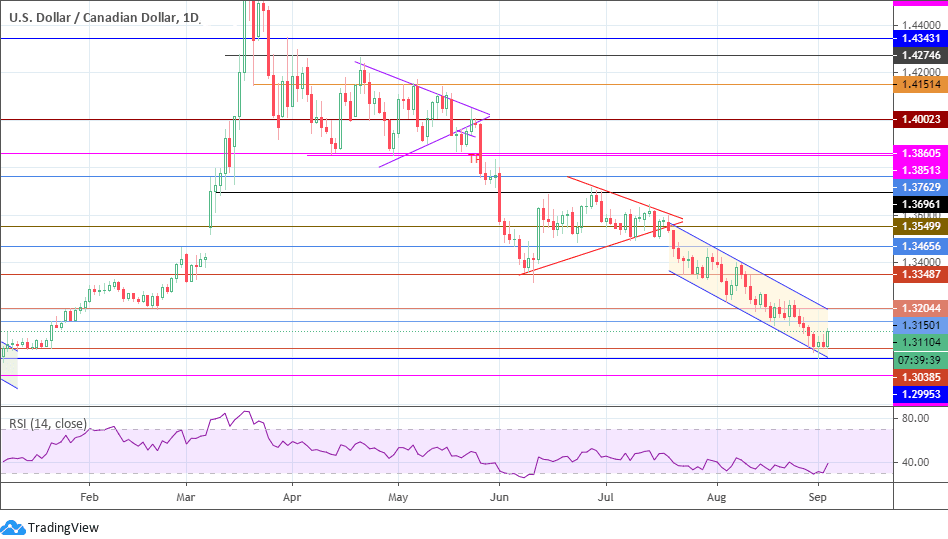The US Dollar is extending gains against the Canadian Dollar and other majors this Thursday as Reuters reports indicate that the European Central Bank (ECB) is growing uncomfortable with the strengthening of the Euro.
The USDCAD is up 0.46% on the day as well, heavily buoyed by the drop in the Initial Jobless Claims well below the 1 million mark. According to the Department of Labor’s latest release, last week’s number of first-time applicants for unemployment benefits fell from 1011K (revised upwards) to 881K. This figure was better than analysts’ expectations of a drop to 955K. It sets a tremendous positive tone for the greenback ahead of tomorrow’s key jobs report, which incidentally will also be released at the same time as Canada’s jobs numbers.
For USDCAD traders, this presents an opportunity to trade the outcome of the jobs reports on both sides of North America’s northernmost border. Here are analysts expectations:
| Country | Employment Change | Unemployment Rate |
| US | 1385K (previous 1763K) | 9.8% (previous 10.2%) |
| Canada | 262.5K (previous 418.5K) | 10.1% (previous 10.9%) |
A close look at the numbers shows that in terms of the expected vs previous employment change ratio, as well as the expected drop in the unemployment rate, the numbers favour the US Dollar. This outlook is also supported by prevailing market sentiment, which has so far not favoured the commodity dollars (CAD, AUD). Furthermore, the loonie has been very sensitive to crude oil prices during the pandemic era, which could add a further dimension to tomorrow’s outcomes.
Trade Outlook for USDCAD
The pair to trade the two sets of employment data with is the USDCAD. Put in another way, data sets that are USD-positive and CAD-neutral/CAD-negative could generate further appreciation in the USDCAD.
This appreciation would challenge the 1.31501 resistance, and if it succeeds in breaking it, then 1.32044 would come into view. A break above the channel changes the game completely, allowing the USDCAD edge higher towards 1.33487. 1.34656 is also a potential target to the north. Even if the data are both USD and CAD negative, this outlook will hold if the USD’s negative outcome is deemed better than the CAD’s outcome as far as the numbers go.
On the flip side, the pair may be able to resume the downtrend if the data sets are both USD-negative and CAD-positive. If both sets of data are negative, but the CAD’s outcome is deemed better than that of the USD, then there could be a case for the price to challenge the support at 1.30385, with 1.29953 and 1.29241 lining up as potential targets to the south.
It is also pertinent to pay attention to the issue of data conflict. A data conflict in an employment report is seen when the employment change and the unemployment rate are not in sync with each other. In other words, employment change has to show an increase with a corresponding drop in the unemployment rate (or no change) to establish a positive outcome. In the same vein, the employment change has to be lower when the unemployment rate is unchanged or higher to show a negative number. If both data move in the same direction, this is a conflict and presents a “no trade” situation in a currency.
For tomorrow’s reports, if we see a data conflict in one country and a tradable number in the other, then there would be a case to set up a trade that shows bias for the currency whose reports are considered tradable at the expense of the other whose numbers show conflict.
Don’t miss a beat! Follow us on Telegram and Twitter.
Dow Jones Daily Chart
More content
- Download our latest quarterly market outlook for our longer-term trade ideas.
- Follow Eno on Twitter.
- Do you enjoy reading our updates? Become a member today and access all restricted content. It is free to join.


